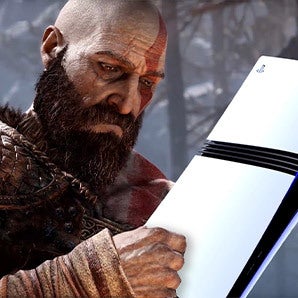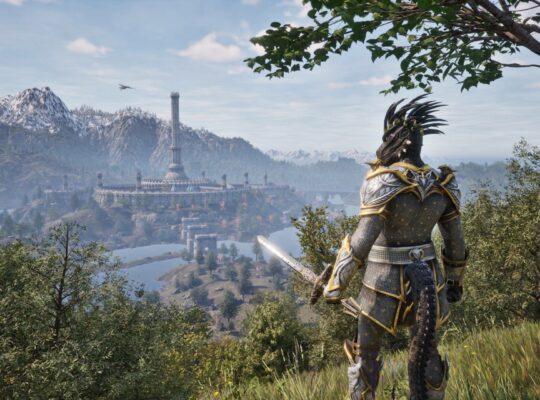This is the first in a series of regular guest columns from Push Square, the world’s biggest independent PlayStation website. We’re the voice of the PlayStation community, offering passionate, in-depth coverage and insight into the world of Sony. Our goal is simple: to keep you informed, engaged, and part of the conversation surrounding all things PlayStation.
Launching at an astonishing $700 on 7th November, the PS5 Pro already faces significant scrutiny from fans: an enormous 89% of Push Square enthusiasts deemed the mid-gen machine “too expensive” in a poll this week. Sony now faces the unenviable task of convincing its most engaged consumers that the console is worth the investment. But with many feeling the PS5 generation has yet to really get started, the PS5 Pro’s problems appear to go beyond price.
This was perhaps best evidenced by Lead System Architect Mark Cerny’s decision to spotlight The Last of Us: Part 2 Remastered during his PS5 Pro presentation – a re-released version of a PS4 game from 2020, albeit an undoubtedly handsome one. While it’s good to know the game will run at an unflinching 60fps in its full 4K fidelity mode on Sony’s new supercharged system, there are few who will feel the astronomical $700 price point is justified by an enhanced last-gen title.
Cerny, to his credit, did highlight some improvements to full-blown PS5 exclusives like Marvel’s Spider-Man 2, but the broader sentiment remains that the base PS5 has yet to flex its full potential. Tentpole first-party titles like God of War Ragnarok, Horizon Forbidden West, and Gran Turismo 7 all look and play great on the PS5, but they’re also available on the PS4, raising questions about whether they’re even stretching the capabilities of Sony’s base hardware to begin with.
An extended cross-gen period, which has continued to see titles release across both the PS5 and PS4, has left early adopters feeling short-changed, as they expected the PS5’s power to be fully explored much sooner. Older consoles are ordinarily left behind within one or two years, but bloated development budgets and pandemic-induced stock shortages have meant that last-gen systems remain very relevant today. We’re fast approaching the PS5’s fourth anniversary, and yet many major titles continue to be developed with the decade-old PS4 in mind, including upcoming releases like Call of Duty: Black Ops 6 and Metaphor: ReFantazio.
How can [PS5 Pro’s] expensive existence be justified when games are still being built with last-gen machines in mind?
All of this puts the PS5 Pro’s value proposition in a precarious position: how can its expensive existence be justified when games are still being built with last-gen machines in mind? Among the PlayStation-obsessed audience on Push Square, just 9% of users say they are willing to purchase the supercharged system at launch – a dramatic decrease from the 24% who wanted the PS4 Pro at the time of its announcement.
While industry data states PS4 Pro only accounted for around 13% of the PS4’s overall install base, it was generally more optimistically received. The timing of the system’s release coincided with an upswing in 4K television adoption, making the promise of improvements to existing 1080p content more tantalising. Furthermore, Sony had long left behind the PS3 at the time of the PS4 Pro’s unveiling, with acclaimed exclusives like Bloodborne and Uncharted 4: A Thief’s End already under its umbrella, and anticipated adventures like Horizon Zero Dawn on the, well, horizon.
The unfortunate reality is that we’re deep into the generation now and we’re yet to see what’s next from the likes of Naughty Dog. Development cycles have extended to such a degree that we may only get one true native PS5 title from the first-party favourite – a marked change from the PS3 era, where it released the entire Uncharted trilogy and The Last of Us in a single console cycle.
GTA 6 and Marvel’s Wolverine will be expected to test current-gen hardware next year, but they’re just two upcoming examples in a generation that’s been unusually slow to get started. Those who podded out for the PS5 in 2020 won’t have expected to wait this long for titles that truly stretch the capabilities of their consoles, and that makes the PS5 Pro’s existence feel all the more unnecessary.
Sony will argue that PS5 Pro is simply about giving players flexibility, and the option to experience higher fidelity graphics and smoother frame rates if they prefer. But it’s clear, at least in the aftermath of the console’s announcement, that fans don’t feel like their existing systems have been tested yet. And that means the PS5 Pro still has plenty left to prove – even beyond its eye-watering price point.
Sammy Barker is the Editor of Push Square. He’s been living and breathing the wonderful world of PlayStation for decades now – and has the tattoos to prove it. You can find him on @_get2sammyb.












